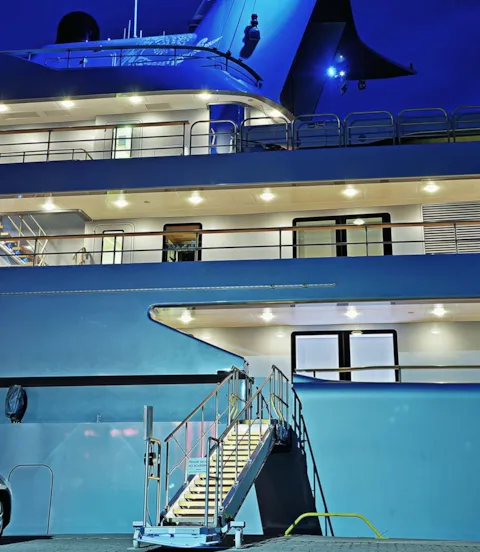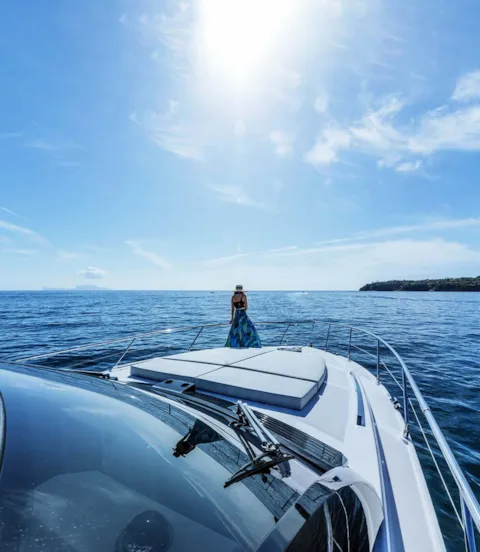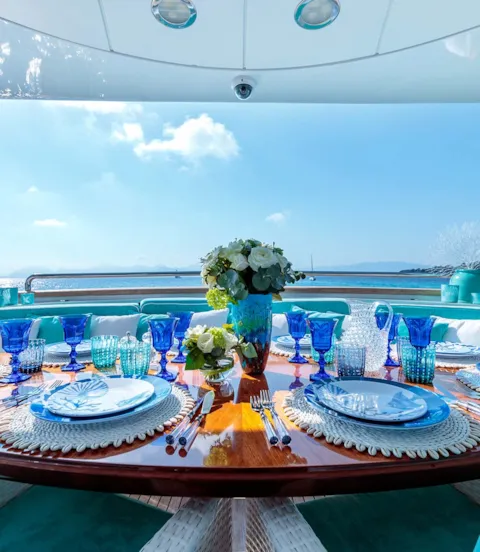Proper planning of events on board a superyacht
Hosting events on board a superyacht are an operational subject, with captains, managers, DPAs and the flag state needing to plan well in advance to ensure the safety of everyone. What do you need to consider from a flag state perspective?
Designer Espen Øino is frequently asked to take large gatherings into account when designing new superyachts. He points out that the designer’s role is relatively small if a large event is being planned aboard an existing superyacht. “Large gatherings are an operational subject with captains, managers, designated persons ashore (DPAs) and the flag state needing to plan well in advance.”

Large gatherings on board need thorough planning
But he notes that a stability investigation should be carried out on some of the older narrower yachts and that there should, of course, be adequate life-saving appliances for everybody on board. Oeino has designed large numbers of day heads on larger yachts – before they were constructed more as a temporary solution – so that guests could visit them either by accessing from exterior decks or from an area immediately inside, without gaining access to the whole interior. He has frequently witnessed extra high-capacity tenders, even small ferries, being chartered for events, shuttling guests to and from the yacht at anchor and remaining manned around or alongside the yacht in case of an incident.
As the approval of such large gatherings depend on the flag state of the superyacht, Maritime Impact put some questions to Marc Verburg, Deputy Commissioner of Maritime Affairs of the Republic of the Marshall Islands (RMI). He shares his insights about responsibility and authorization for large gatherings from the flag state perspective.

Who has the final say on large numbers aboard? Can you provide an example?
It depends on the national legislation of the flag state. If nothing is in the legislation, then it is up to the captain and DPA to carry out due diligence. But most flag states do have rules or regulations when it comes to large numbers on board. The RMI Yacht Code states that if there is to be an event with more than the usual 12 passengers, then the RMI Maritime Administrator (the “Administrator”) needs to be informed and there cannot be extra overnight passengers. Normally the DPA would submit application forms and include risk assessments, a review of statutory documents, and check to confirm SOLAS, load line, surveys and class condition are all in order. We prefer to have plenty of warning, at least several days in advance. The Administrator did have one extreme scenario where a request was made at 16.30 for an 18.00 departure for an important event for an owner. Thanks to our decentralized offices and on-site team, we managed to provide a Letter of Non-objection (LONO).What are the main criteria/factors looked at?
We do a full review of all certificates, request an up-to-date manning schedule and check that each seafarer is certified. For the risk assessment we consider crowd management. Crew training in crowd management is normally only required for cruise ships but the yacht’s crew needs to be aware and prepared for crowd management. We ask the managers to have a stability assessment done and reviewed by the classification society. One-hundred people on a 24-metre yacht is very different to 100 people on a 140-metre yacht. Weather forecasting is the full responsibility of the captain and life-saving appliances must be sufficient. If infants or children are on board then specific equipment is required. This must be declared in advance, along with the number of service personnel. It is very typical for the captain to rent additional equipment, from life jackets and rafts to additional tenders.
What is the difference for an event at-anchor vs. alongside or stern-to?
The RMI regulations state “when on an excursion.” That means from the moment the lines are untied from the dock. When the yacht is quayside, the Administrator takes into account that people can disembark easier, so it is not necessary to ask for the full suite of requirements. The captain and DPA determine what the local port authority would like to see. If the port authority would like a LONO (it is not called an exemption) from the flag state, then it can be provided after going through all the requirements as if the yacht is underway.
Do you look at sanitation requirements or is that something for the captain?
Sanitation requirements are a flag state matter because of the International Convention for the Prevention of Pollution from Ships (MARPOL) requirements. The yacht is certified for a maximum amount of people. For example, if the yacht is licensed for 52 people but has 100 people on board for an event, then the sewage capacity and grey water capacity must be monitored during the event. The captain also needs to be sure that there is no overflow of the tanks.
Is it treated differently if entertaining externally only?
There is no difference. If somebody steps aboard the yacht, they become a passenger regardless of whether they are in the interior or on the exterior. The stability criteria are the same.
Can you give a captain the “OK” to hold several events over a period of time?
The RMI regulations address a limited excursion; however, we have had cases where events may span a period of time. The Administrator had a request from an owner who had a number of days post-charter where events were held on board for business reasons. The Administrator treats situations like this on a case-by-case basis and issues a LONO, specifying the exact date and times for each event. Owners have requested a LONO carte blanche, but the Administrator is not able to provide this as the flag state needs to be aware in case of search and rescue operations that may need to be coordinated.
What are the rules for tenders or rescue boats being in the water?
The LONO takes into account conditions/rules that may apply including whether tenders and rescue boats are either in the water or ready for deployment. Depending on the number of persons on board, the Administrator recommends that an extra tender is hired to be alongside the yacht and also, if the yacht is in an anchorage with other yachts around, we suggest the captain contacts surrounding yacht captains to ask if they can be prepared to assist if necessary. Safety is always a top priority.
If the weather turns bad suddenly and it is too choppy to disembark, can the yacht cruise to a more protected port with guests on board?
The LONO also states the weather and forecast during the entire event, which is another reason they are not issued carte blanche. It is the captain’s responsibility to make the call to weigh anchor and reposition the yacht in more sheltered waters while also liaising with the local port authority who may deny entry. However, the Administrator has not encountered this scenario as captains are very aware of the weather. The Administrator does emphasize in the LONO that the captain is in command and cannot be over-ruled by anybody else, including the owner. The captain has the power to make the decision to move the yacht or refuse disembarkation.
Do owners need to notify their insurers if holding a large event?
The Administrator always recommends that owners check with their insurance provider. There have been cases where the insurance clause does not cover the amount of people, so it is important that this detail is not overlooked. If there is an incident then the insurance claim can be denied because of the number of persons on board, even if the incident is unrelated to that fact. Usually, the insurance company will say that if the event is approved by the flag state, then there will be no objection by them.
How much notice do you expect? Do captains ever just risk it if pressed by the owner?
The communication between the yacht’s flag, its classification society and its owner needs to be established in enough time for all stakeholders to conduct due diligence. If requests come in one day before an event, then it is not easy. If a captain holds an event, without permission, then there is a risk of losing his/her master’s license.- Marco2811 - stock.adobe.com
- Andrea - stock.adobe.com
- SPIX PRODUCTION - stock.adobe.com